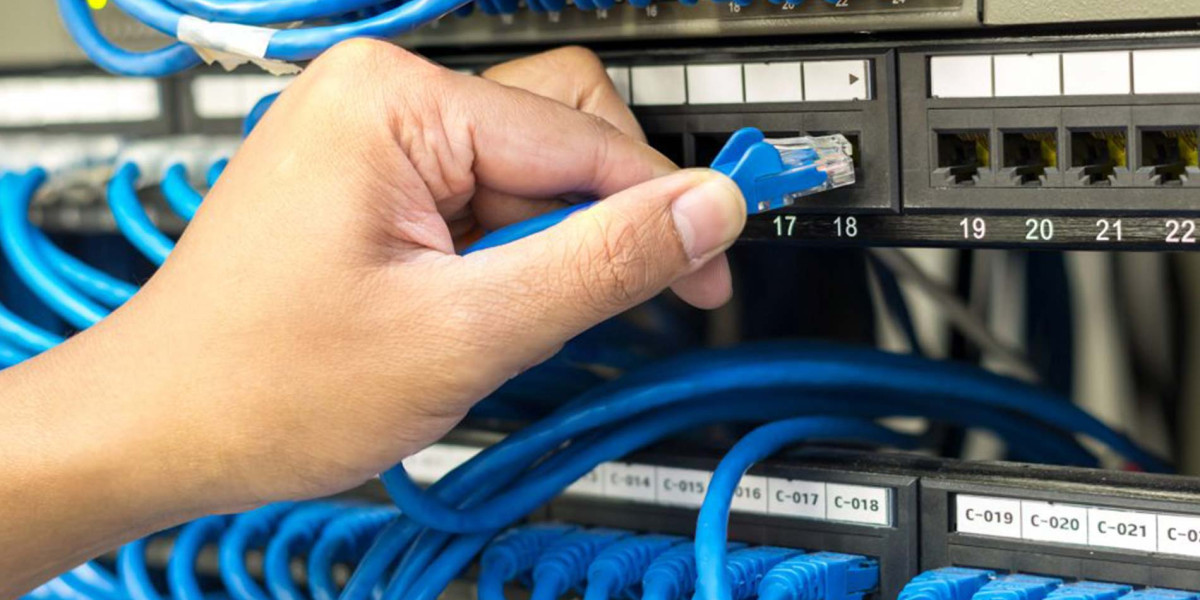In today's interconnected world, data cabling installers play a crucial role in the successful operation of modern businesses, homes, and data centers. With the ever-increasing demand for high-speed internet, seamless communication, and reliable data transfer, the installation of structured cabling systems has become a vital part of establishing a robust network infrastructure. This article will explore the responsibilities, skills, and importance of data cabling installers in ensuring smooth and efficient network operations.
What is Data Cabling Installation?
Data cabling installation refers to the process of setting up and organizing cables that carry data and communication signals within buildings or campuses. These cables are typically installed within walls, ceilings, or floors to create a network that supports everything from local area networks (LANs) to telecommunication systems and security equipment. Cabling types commonly used in these installations include copper-based cables such as Cat 5e, Cat 6, or Cat 6A for Ethernet networks, as well as fiber optic cables for high-speed, long-distance communication.
The Responsibilities of Data Cabling Installers
Data cabling installers are responsible for more than just running wires through walls. Their job encompasses a variety of tasks, including:
Planning and Design: Before installation, cabling installers collaborate with IT professionals, network engineers, and project managers to assess the network requirements. This involves determining cable pathways, the type of cabling required, and the necessary hardware (e.g., patch panels, switches, and routers).
Installation of Cables and Connectors: Installers must properly lay cables along predetermined routes, ensuring minimal interference and optimal performance. They then connect cables to the appropriate network equipment and ensure secure connections. This often involves terminating cables with connectors, including RJ45 plugs for copper cables or SC/ST/LC connectors for fiber optic cables.
Testing and Troubleshooting: Once installation is complete, data cabling installers must test the network to ensure that all connections are working correctly and that the system meets performance standards. This involves using specialized equipment to check for signal loss, continuity, and data integrity. In cases of poor connectivity or malfunction, installers troubleshoot the issue by identifying faulty cables, connectors, or devices.
Documentation: Installers are responsible for maintaining accurate records of their work. This includes creating network diagrams, labeling cables, and recording cable lengths, which can be useful for future maintenance or upgrades.
Maintenance and Upgrades: As networks evolve, cabling installers are often called upon to upgrade or maintain existing systems. This could involve replacing outdated cables, expanding network capacity, or integrating new technologies.
Essential Skills for Data Cabling Installers
A data cabling installer must possess a variety of technical skills, physical stamina, and attention to detail:
Technical Knowledge: A deep understanding of networking protocols, standards, and equipment is essential. Installers need to be familiar with the different types of cabling (e.g., twisted pair, coaxial, and fiber optic) and their applications.
Attention to Detail: Ensuring that cables are properly routed, connections are secure, and the system performs optimally requires a high level of precision and focus.
Problem-Solving: Installers must be able to quickly identify and resolve any issues that may arise during installation or testing, such as damaged cables or faulty equipment.
Physical Dexterity and Stamina: Data cabling installations can be physically demanding. Installers often work in confined spaces, lift heavy equipment, and work at heights, requiring physical endurance and safety awareness.
Certifications and Training: Many installers hold certifications like BICSI (Building Industry Consulting Service International) or CompTIA Network+ to validate their skills and knowledge. These certifications provide credibility and demonstrate a commitment to industry standards.
The Importance of Data Cabling Installers in Network Infrastructure
Data cabling installers are the backbone of any modern communication network. Without their expertise, businesses, educational institutions, hospitals, and even homes would struggle to establish reliable connectivity. Their work ensures that all components of a network are connected properly, facilitating high-speed internet, video conferencing, secure communication, and access to cloud-based services.
In data centers, where large amounts of data are stored and processed, cabling installation is especially critical. A well-organized, high-quality cabling infrastructure enables faster data retrieval, minimizes downtime, and supports scalability as data storage needs increase.
Conclusion
Data cabling installers are essential professionals who play a vital role in ensuring the proper setup, maintenance, and optimization of network systems. Their expertise in planning, installation, troubleshooting, and upgrading data cabling infrastructure directly contributes to the efficiency and performance of modern networks. With the growing reliance on digital connectivity, the importance of skilled and reliable data cabling installers will continue to be at the forefront of network infrastructure development.








